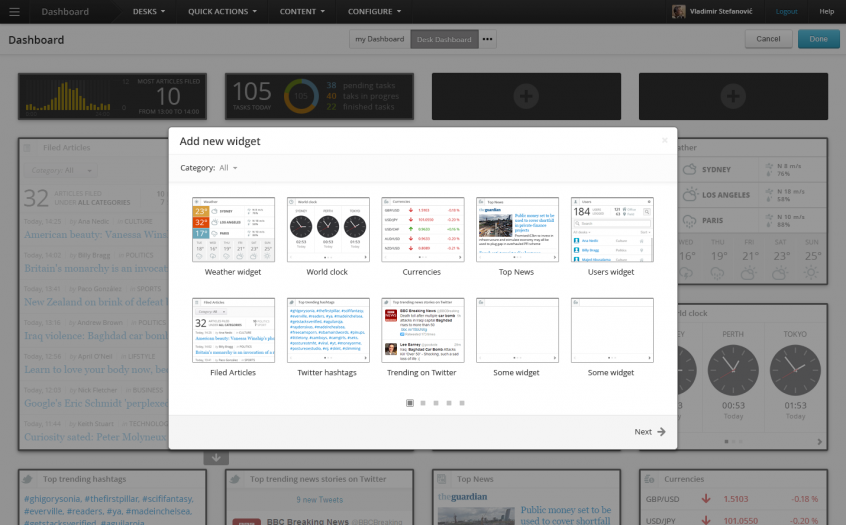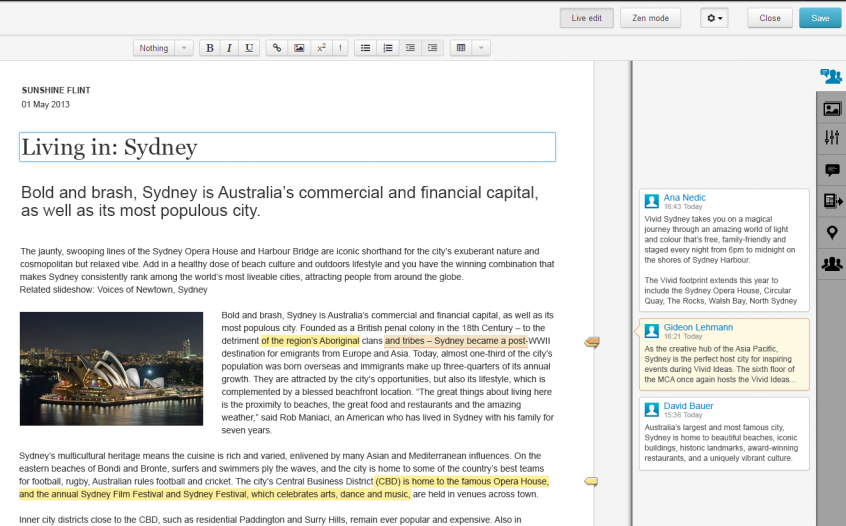Have you heard the one about the big media house whose new, proprietary content management system (CMS) handles its every need, worked straight out of the box and with which all the journalists are in love? No?
That's because few people ever string together fibs of that magnitude. Substitute the term “in-house developed” for proprietary and the effect is the same.
Twenty-something years of experience with newsroom systems, as a production-side journalist, and also as “product owner” during development of said systems, has taught me a few things. Most relate closely to pain, anguish and the will to commit violent acts.
Let’s lay some ground rules:
- One. If I could, I would ban the term "news CMS" for its glib disingenuity. A CMS is OK if you’re a corporate or a small business. If, on the other hand, your business is news, you need something more than a one-size-fits-all box. Even as news media continue on the path to convergence, the tools to handle each media type retain the need for specialism, and the expertise of specialists to design them.
- Two. A system to manage newsroom content will never be complete because it cannot be. New forms of media will continue to emerge and, news being about communication channels and platforms, media houses must get across them rapidly and be properly equipped to use them to compete, and even to survive.
- Three. No two newsrooms, no two print sections of newsrooms, no two desks in the same print newsroom, no two online desks, no two broadcast desks, work in the same way. Why would we, then, expect them to run optimally using near-identical tools?
These points mitigate against proprietary systems, even against those whose vendors promise customisation and configuration to the nth degree. There is a world of difference between a vendor’s idea of your business and what your business actually is. So how about in-house? Let’s say that your developers have a great handle on your business, know all about news workflows, speak the same language as your editorial people, and decisions about your most critical tools are made by those who understand them rather than by managers who think that they do.
If those caveats didn’t strain your sense of the credible, you live in a perfect world and I’d love directions to it and a job when I get there.
(Having said that, a system to handle the online presence of a quality British newspaper was built in-house in the mid '90s. It succeeded for quite a few reasons, not least the simplicity of the web in those days. I’ll return to this later, but suffice it to say that a few years down the track one of the big corporate consultants was brought in to oversee implementation of the next so-called CMS. Cue unmitigated disaster, furious journalists, a plunge in standards and a multi-million-pound overspend.)
Building a news management system today is a huge undertaking, and even a modest media player would need to beef up its dev team numbers significantly for the project duration. As mentioned earlier, of course, you’ll always need the devs again to tackle whatever new thing is around the corner.
Development projects are expensive, and, across the board, news media are struggling to monetize their digital investments, and revenues are being squeezed relentlessly. Even the biggest names with generous resources can come unstuck to the tune of tens of millions, often with nothing to show for it at the end. Here’s a headline from The Guardian for a piece written in May 2013: "BBC axes £98m technology project to avoid 'throwing good money after bad'."
What is going wrong here? One could blame consultants, over-ambition, poor project management, plain wrong-headedness, or the perennial human tendency to try to reinvent the wheel rather than, say, improve on existing tire technology.
Which brings me to open source. This is technology to be built upon, improved, added to, and extended—all in view of a development community committed to flexibility and freedom; the freedom to customize, fork, and, paradoxically, to “own” a tool in ways that paying a license fee cannot match or even come close to rivalling.
It could be argued, then, that news media should be all over open source and so harking back to their roots as true technology innovators. This hasn’t happened, until now.
Enter Australian Associated Press, a news agency playing the wholesale game with its competitors and collaborators. These are your Reuters, your Associated Presses, Agence France-Presses, Press Associations, and all the world’s agencies that provide the bread-and-butter content for publishers, print and digital, and the broadcasters, streamers, the on-demand hipsters—news retailers.
Bitten once by a monolithic proprietary system, weary of increasing cost pressures as in-house teams bolted ever more complex satellite systems to an ageing core long overdue for the scrapheap, the Australians are just so over all of that. They want their tools, for their people, their way. Not least, they want the dev effort to reflect the needs and wishes of their journos, not their managers.
Their solution is to go open source. Not just as customers, either. No, AAP has rolled up its sleeves and is now partnering with the Prague-based open source outfit Sourcefabric in its development of the Superdesk news management suite of tools.

Pallid European developers rotating in and out of Sydney, getting sunburnt. Aussie developers huddling together for warmth during stints in the Czech Republic. Teams working in tandem at opposite ends of the planet. A development effort on which, quite literally, the sun never sets.
AAP wants a system that it can extend and tweak to meet whatever media innovation or even novelty falls from out of the blue next week, next month, next year. It wants to create and curate, to archive, interrogate, repurpose, bundle, package, and monetise its words, images, and video. It needs to serve its customers using legacy systems and at once spoil rotten those geared up to consume the nifty richness of NewsML G2.

Scalable, modular and transparent, Superdesk expects and anticipates the need always to embrace the new and to grandfather the old. By way of a metaphor, and being of a certain age, I can remember shopping for my first hi-fi system. For a great deal of money, actually way more than I had at my disposal, I might have gone for a sleek and space-age Bang and Olufsen music centre. Or, for however much money I wanted to spend, I could choose separates; speakers to suit my taste in tone, brightness, bass and treble, amplifiers for power and signal, and—here’s the thing—a turntable, tuner, and tape deck.
The turntable, tuner, and tape deck have long since lived in the attic. The speakers and amplifiers still give splendid service, even if their inputs nowadays are from CD, DVD, laptop and phone, and other technologies not dreamed of at the time my core components were built.
I’ve never been without my music and I have never had to throw my entire original investment in the bin. So it should be with your newsroom systems. Modular makes sense, monolithic means the inevitability of a museum-piece.
And my own journey to open source? That began in the pioneering online newsroom of the venerable British broadsheet mentioned earlier. Our developers went native in editorial—they really “got it”. In return, a couple of us journos got bitten by the tech bug. Some of us learned a thing or two about coding and, thanks to the individuals encouraging us, our mucking about started with GNU/Linux and open source. It started with Slackware, tarballs, and what I still remember fondly as destructive learning. I wrecked more distros than I’ve had long lunches, which, for a journo of my era, is saying a lot.
It never mattered if I broke something, though. There were always our friendly devs, and beyond that an army of thousands more to be consulted, chatted to, and worked with online. Twenty years on and, finally, my chosen industry has turned a similar corner, led by a veteran news player but one with the vision to escape the gravity well of the old and tired, the myth of the monolithic CMS.
We’re having a party down under, and you’re all invited. It’s a heady mix of a reasonably priced bar and yet no restrictions on the BYO (bring your own). Everyone has something to offer, something to contribute and, above all, something to share. Join us, then, and write your own headlines about it.







3 Comments